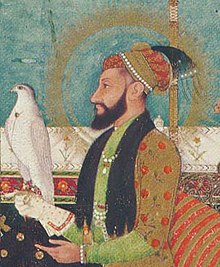Aurangzeb’s Death: A Turning Point in Mughal History

Introduction
Aurangzeb, the sixth Mughal emperor, ruled over a vast empire in India from 1658 until his death in 1707. His reign was marked by significant political and cultural changes, but his passing heralded a pivotal shift in Mughal rule. Understanding the death of Aurangzeb is crucial, as it not only brought an end to a vigorous and controversial reign but also initiated a gradual decline of the Mughal Empire that transformed the political landscape of India.
The Death of Aurangzeb
Aurangzeb died on March 3, 1707, at the age of 88, after a long and arduous tenure. His health had been deteriorating for some time, plagued by illness and the stresses of governance. Historical records indicate that he died in Ahmednagar, where he had spent his last years focusing on administrative duties and military campaigns. His death was not only a personal tragedy but also a moment of uncertainty for the empire, which had thrived under his significant yet contentious policies.
Aftermath of His Demise
The immediate aftermath of Aurangzeb’s death saw a power struggle among his heirs, which further weakened the Mughal authority. Aurangzeb had designated his son, Bahadur Shah I, as his successor, yet the lack of a clear succession plan led to disputes. The ensuing conflicts revealed the fragility of the Mughal state and marginalized the once-mighty empire, paving the way for increased regional autonomy and the rise of other powers, including the British East India Company.
Cultural and Religious Impacts
Aurangzeb’s legacy is often debated due to his policies, which leaned towards conservatism and orthodox Islam. His death was perceived by many as a relief from his austere rule, which had alienated various Hindu factions and led to significant uprisings. Scholars have argued that his demise allowed for a renaissance in cultural dialogues and a resurgence of Hindu identity in the subsequent years, as well as fostering new political entities like the Marathas, Sikhs, and others, who carried forward the fight against Mughal dominion.
Conclusion
The death of Aurangzeb marked the beginning of the end for the Mughal Empire, an era that had once been a significant force in Indian history. It not only initiated a power vacuum but also emphasized the importance of leadership and adaptability in governance. As historians continue to analyze the implications of his policies and eventual demise, the effects are still evident in modern India’s sociopolitical fabric. Understanding the historical significance of Aurangzeb’s death provides insight into the complexities of India’s past and its ongoing journey.









